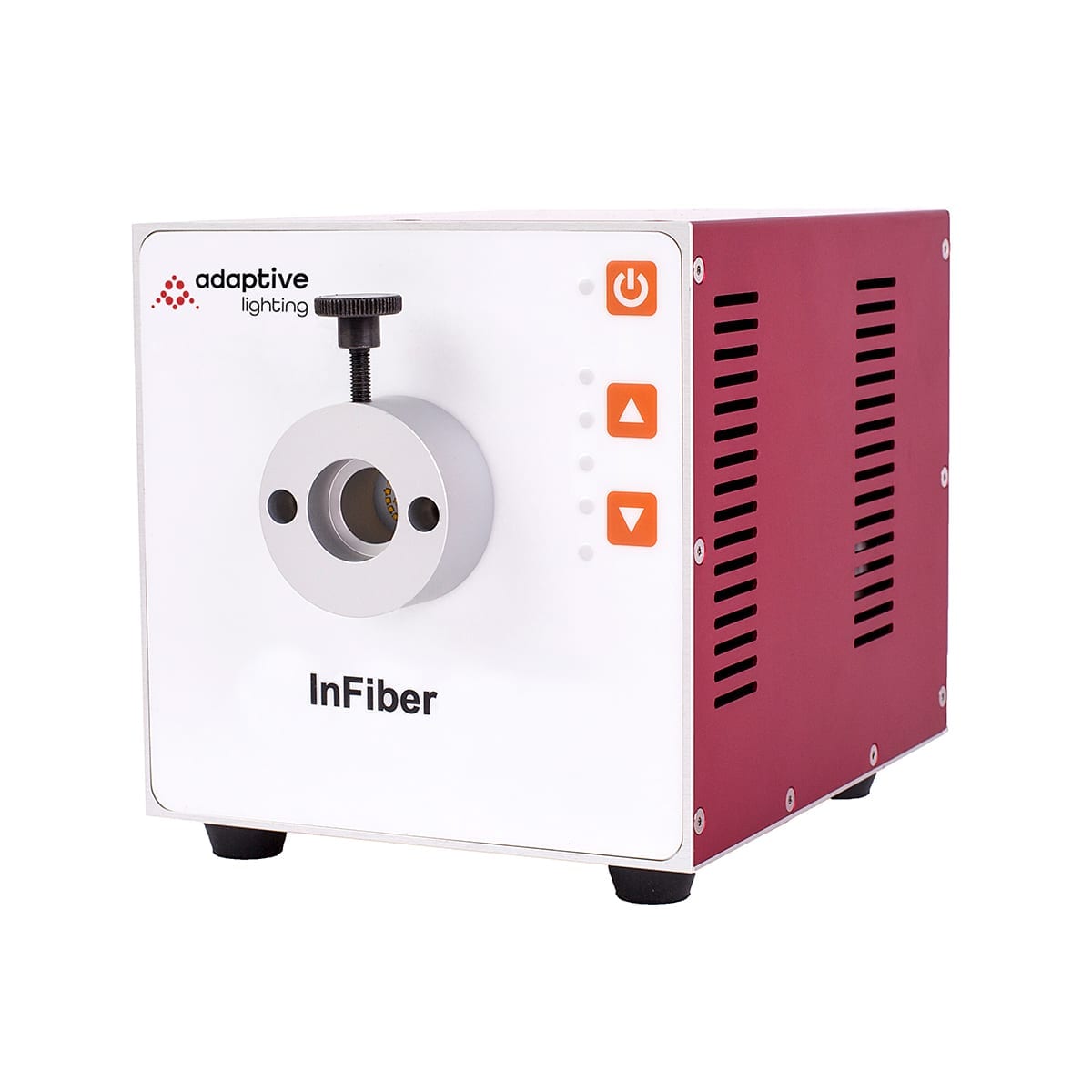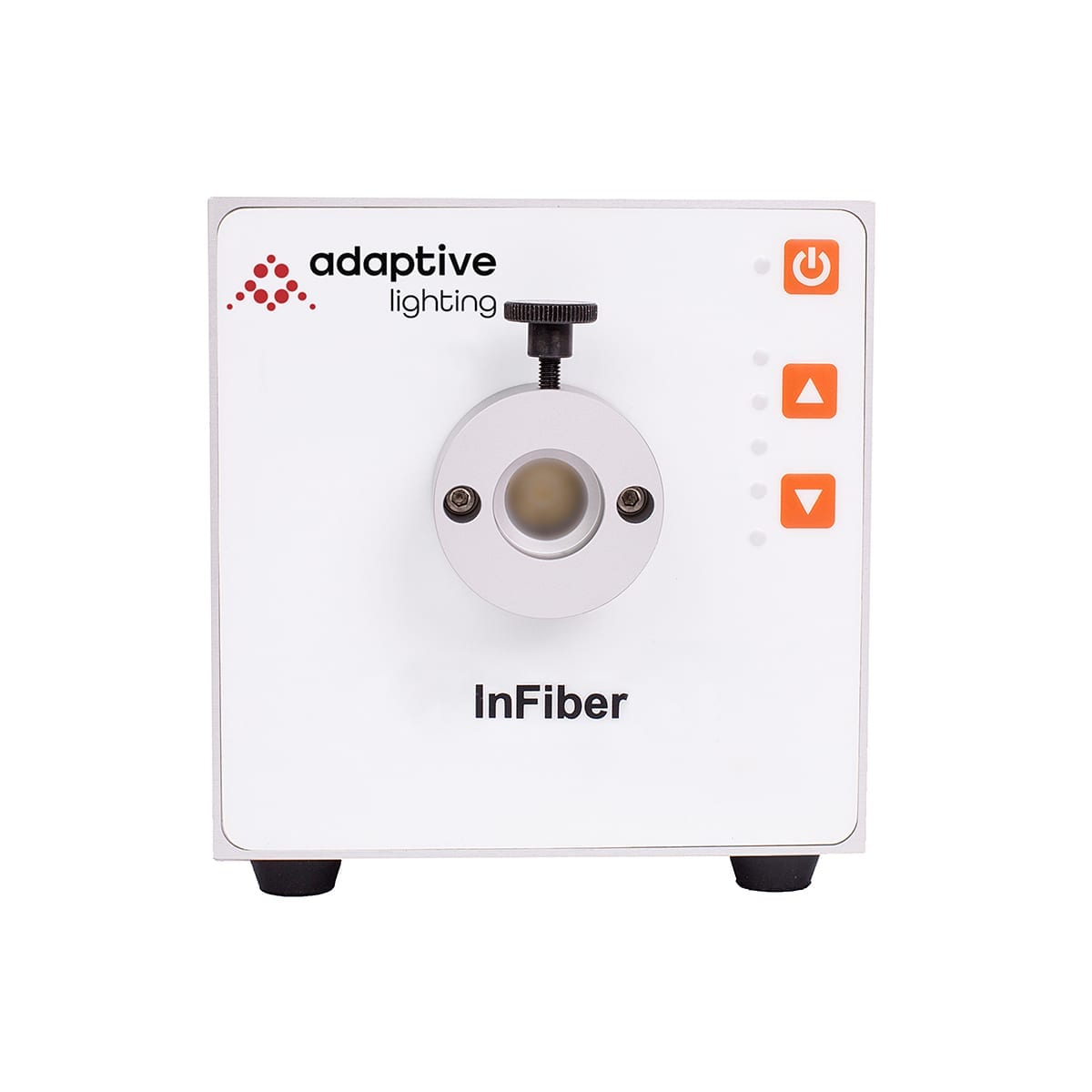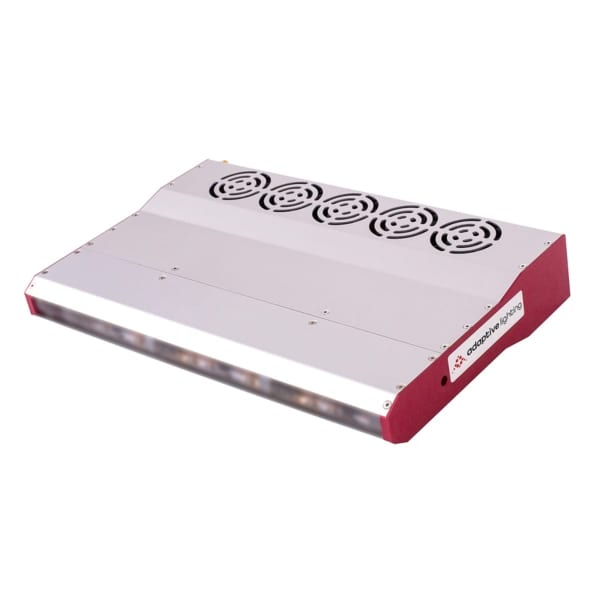Adaptive Lighting Ltd’s InFiber system is designed using state of the art chip on board LED technology which guarantees best in class efficiency and lifetime. Infiber utilises closed loop feedback technology to constantly monitor the unit’s optical output and thereby ensuring its stability (and repeatability). Adaptive Lighting zoned circular LED array provides maximum uniformity across all fiberbundle sizes. The proprietary Graphic User Interface (GUI) allows the user to control the intensity of the LED light source and to monitor the optical and electrical parameters of the light source. Each precisely engineered module features ultra high efficiency Chip on Board LEDs, advanced air cooled thermal management and robust anodised Aluminum 6061 T6 housings. The IF products are designed using narrow emitting band LEDs in the wavelength range of 700 to 1500nm.
Note: RadSense is highly recommended as a vital accompaniment to this unit.
Contact Adaptive Lighting for specific wavelength requirements.




Share this on...